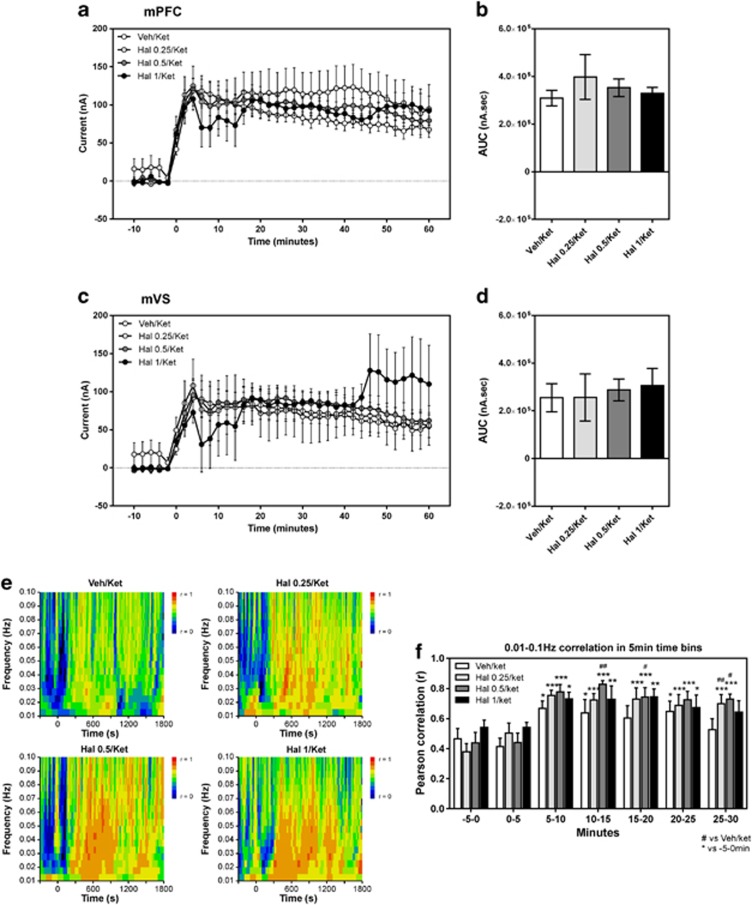Figure 5.
Haloperidol–ketamine interaction study. (a) Temporal profile of changes in tissue O2 levels in the mPFC (n=6) and (c) the mVSc (n=5) following S-(+)-ketamine (25 mg/kg, s.c.) injection in rats pre-treated with haloperidol (0.25, 0.5, 1.0 mg/kg, i.p.). Means (± SEM) of normalized O2 currents averaged over 2-min time bins are shown over the 1-h post-injection period. (b) mPFC and (d) mVS AUC measures extracted from the O2 response, where bars represent mean (± SEM) AUC for the 1-h period following ketamine injection. *p<0.05, **p<0.01, ***p<0.001 vs vehicle. (e) Coherograms for each treatment group showing the correlation value (r) by color intensity at frequencies between 0.01 and 0.1 Hz (Y-axis) for −300 s (5 min pre-injection) to 1800 s (30 min) post-ketamine injection on the X-axis. (f) Summary of coherence data showing the correlation of the whole frequency range (0.01–0.1 Hz) for each treatment group in 5 min (300 s) time bins (n=7). Bars represent mean (± SEM) Pearson correlation values (r) between 0.01 and 0.1 Hz in 5 min time blocks. RMANOVA performed on Fisher transformed r-values, *p<0.05, **p<0.01, ***p<0.001 vs pre-injection baseline; #p<0.05, ##p<0.01, ###p<0.001 vs Veh group.

